You’re walking along some bushes in a park, and suddenly see a tiny gray creature skittering into the fallen leaves. At first you might think it’s a rodent, but this frenetic ball of energy is actually a shrew.
While it may appear small and gray, shrews are one of the most voracious mammalian predators on the planet. And they’re abundant and widespread, found on five continents in a variety of habitats. In the United Kingdom, there are an estimated 50 shrews per hectare in woodlands, with a country-wide population of more than 40 million shrews. The northern short-tailed shrew may be the most common mammal of the eastern United States.
Soricidae, the shrew family, contains more than 385 species. Superficially, many of these species look similar, with most having pointy snouts, a streamlined body and a grayish coloration. But they exhibit a diversity of behaviors. Even though they’re common and widespread, few people see them and fewer know their crazy habits and adaptations.
Let’s take a look at just some of the many reasons to marvel at shrews.
-
Life in the Fast Lane
If you’re lucky enough to see a shrew, you’ll notice that it’s moving rapidly, with rapid, jerky movements. This isn’t because you scared it; shrews just live life fast and furious. Your most highly caffeinated, Type A colleague will appear downright slothful compared to a shrew.
While this varies among species, a shrew’s heart rate beats 800 to 1000 times per minute. The Etruscan shrew, the smallest terrestrial mammal on earth, has a heart rate that can reach 1500 beats per minute, more than any other mammal and more even than the hummingbird.
Shrews have been recorded making 12 body movements per second. (Go ahead and try to duplicate this feat). They’re in constant motion, rarely stopping to sleep. They have a high metabolism, which means they have to eat. A lot.
A shrew’s life is a constant search for prey. Many species must eat their body weight’s worth of food each day. (I advise you not to attempt this one). If a shrew doesn’t eat within a few hours, it dies. This constant need for food has led to some truly bizarre and even disturbing adaptations.
-
Watch Those Whiskers
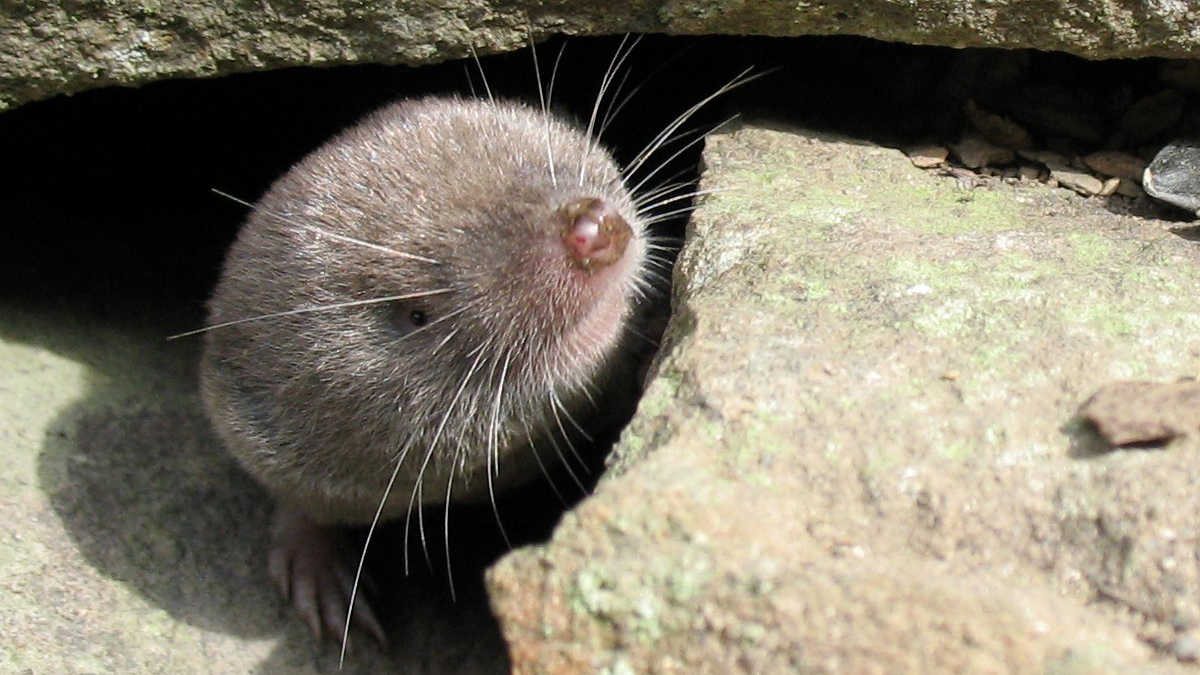
Northern Short-tailed Shrew. Photo © Gilles Gonthier / Flickr Shrews must find and subdue prey fast. They have poor eyesight and often live in thick cover filled with obstacles. How do they manage?
Many sources mention that some shrews use echolocation: they emit sounds producing sonar that helps them navigate their world (much like bats). Shrews emit a sound described as a “twitter” and it is often assumed this is used in echo-location. However, much of the evidence appears anecdotal. An article in the journal Biology Letters found “shrew-like calls can indeed yield echo scenes useful for habitat assessment at close range.”
There isn’t evidence that this echolocation is used to find prey. Instead, shrews rely on their long, highly sensitive whiskers, also known as vibrissae. According to a study published in Philosophical Transactions B, the Etruscan shrew hunts in an environment where crickets are particularly abundant. It moves its whiskers constantly – a motion called, appropriately enough, whisking – until it brushes its prey. Then it strikes quickly and with great precision.
Of course, wasting time attacking non-prey items that the whiskers brush against would burn precious energy. The researchers conducted an intriguing test:
“Experiments with dummy prey objects showed that shrews attacked a plastic replica of a cricket but not other plastic objects of similar size. Altering the shape of crickets by gluing on additional body parts from donor animals revealed that the jumping legs but not the head are key features in prey recognition.”
-
Shrew Venom, A Horror Story
You can spend way too much time on YouTube watching videos of shrews attacking mice, scorpions, snakes and other larger creatures. Spoiler alert: the shrew wins.
This is because many shrew species are venomous. Research has found that an individual shrew stores enough venom to kill 200 mice. Some shrews also use this venom for something called live hoarding.
Live hoarding sounds innocuous enough, but in reality it shares numerous plot points with that terrifying movie Hostel. Here’s how it works.
The shrew lacks hollow fangs (as in venomous snakes) but instead has a gland that allows saliva to flow with the venom. When the shrew encounters its prey – often an invertebrate, but it can also be a mouse or other vertebrate – it begins biting it, allowing the venomous saliva to flow into the wound.
For the prey, this is the beginning of a very bad day. The venom paralyzes the creature, but keeps it very much alive. The shrew can then move it to a cache, available for whenever hunting is not going so great. For an animal that has to eat constantly, this keeps a fresh if unsavory meal always at the ready.
The American Chemical Society reports that a mealworm can be kept, paralyzed but alive, for 15 days.
Shrew bites on humans are reportedly painful but fade in a few days. Be very, very glad these animals are not larger.
-
Following the Herd
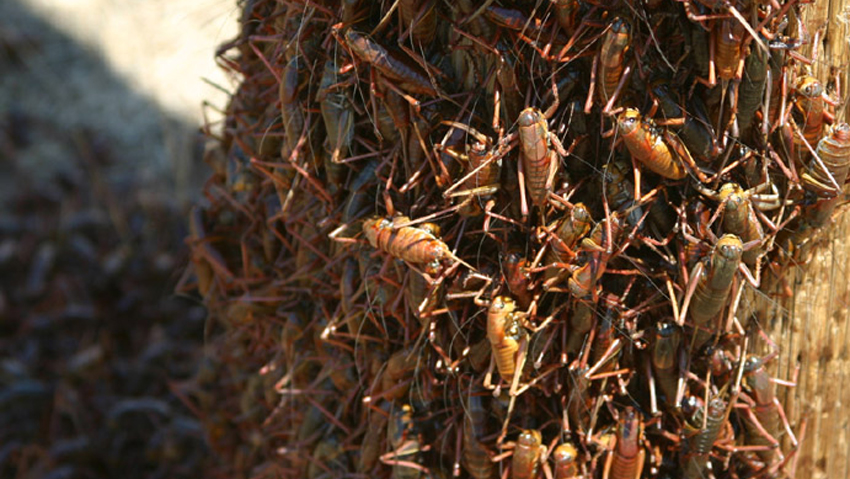
Mormon crickets in Nevada, 2006. Photo © katie madonia / Wikimedia Commons through a CC BY 2.5 license In the sagebrush country of the western United States, one species of shrews may follow the thundering herds … of Mormon crickets. Mormon crickets (actually a species of katydid) are prone to periodically have population explosions resulting in large swarms.
Vladimir Dinets, in the Peterson Field Guide to Finding Mammals, includes this intriguing description: “On arid plains these shrews follow swarms of Mormon crickets the same way Gray Wolves follow migrating Caribou herds. If you encounter a swarm, look for shrews scurrying along its tail edge.”
Dinets’ book, by the way, is like a shrew spotter’s bible, including tips on where and how to seek all the North American species.
-
Walking on Water
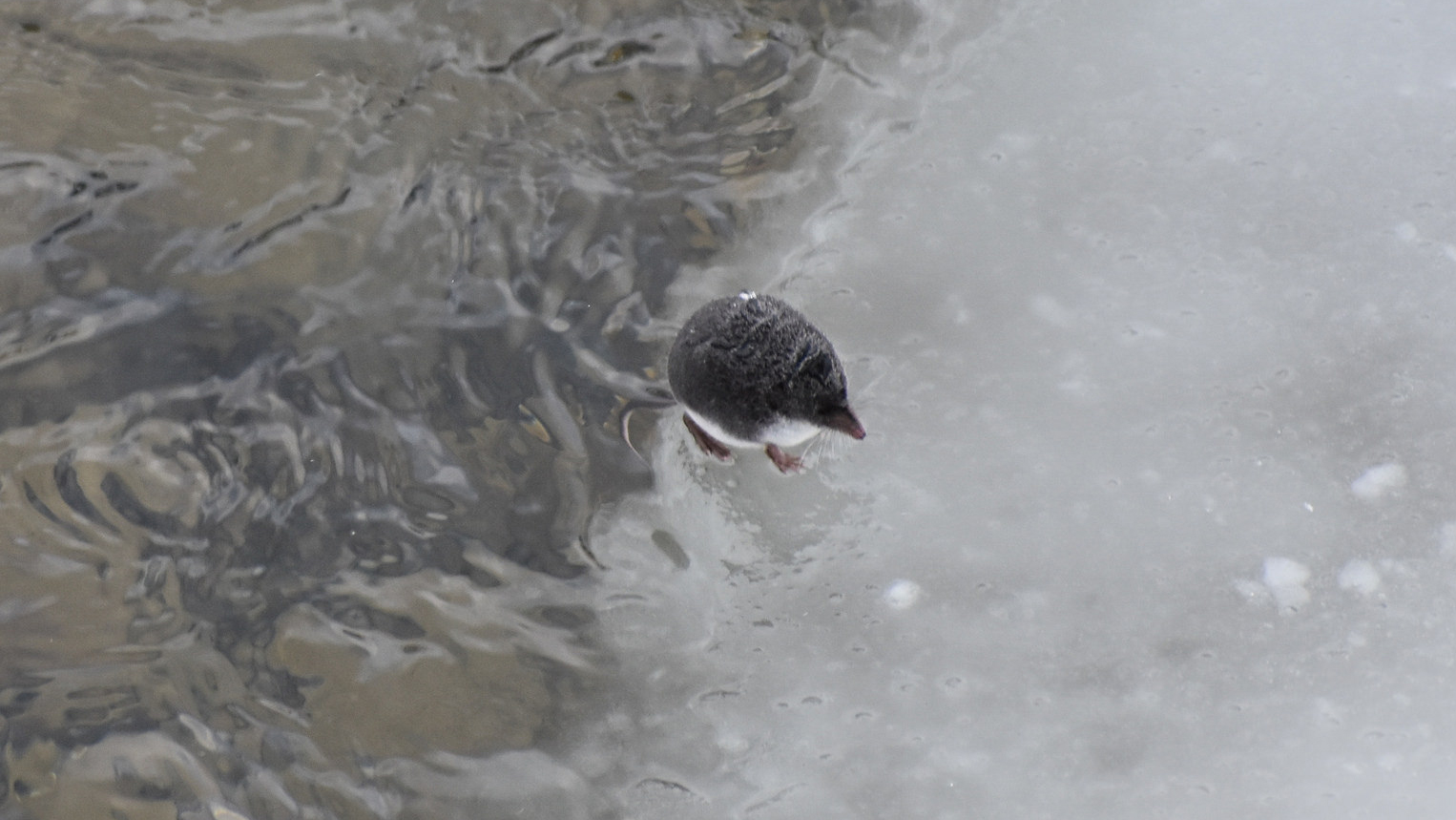
Water shrew on Pebble Creek. © NPS/April Henderson / Flickr You can find a shrew species in just about any habitat. Several species of water shrews even take to streams. The water shrew has stiff hairs on its feet that allow it to scamper across the surface of the water. Its stiff fur also traps air bubbles, allowing it to stay underwater for short bursts. It must stay in constant motion underwater, or it pops back up to the surface. It hunts caddis larvae and other small aquatic prey.
Theodore Roosevelt (yes, the president) observed a water shrew catching a minnow in North Idaho. He described it in his book The Wilderness Hunter: “It was less in size than a mouse, and as it paddled rapidly underneath the water its body seemed flattened like a disk, and was spangled by tiny bubbles, like flecks of silver.”
As a side note, Theodore Roosevelt also kept a shrew in captivity (he fed it a mouse and garter snake) and observed, wrote about and collected shrew species on his lengthy African safari. He even has a shrew species named after him. I’m not surprised that he had a love of shrews, given his accomplishments as a conservationist, naturalist and outdoors enthusiast. I wish for another politician like him nearly every day.
-
The Incredible Shrinking Brain
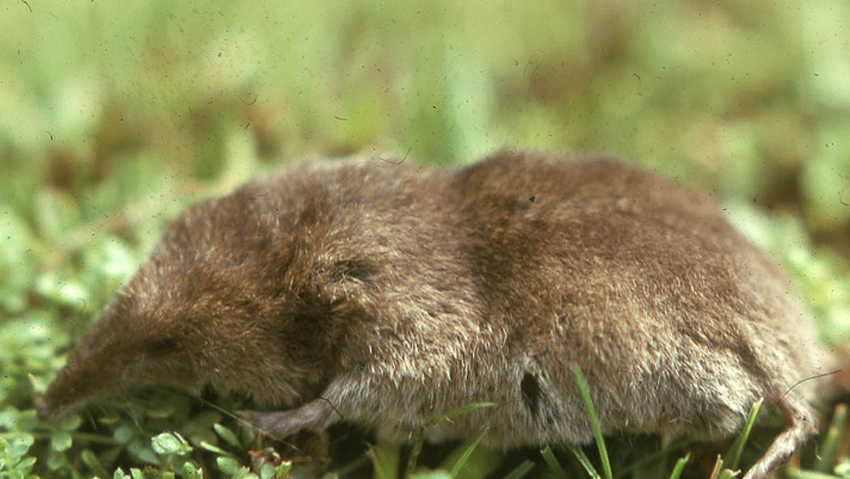
Common shrew (Sorex araneus). Photo © Dr Mary Gillham Archive Project / Flickr through a CC BY 2.0 license Many wildlife species feast and bulk up for the cold winter months. With the shrew’s metabolism, weight gain is not an option. And so at least one shrew species shrinks. A recent study, published in the journal Nature, found that in common shrews in Germany, “Their spines also got shorter, and major organs, including the heart, lungs and spleen, shrank. Even their brain mass dropped by 20–30%.”
Researcher Javier Lazaro hypothesized that “reducing their body mass during winter might increase their chances of survival, because they wouldn’t need so much food.” The brain in particular has high energy requirements, but the study could not determine if shrews experienced decreased cognitive functions.
-
Foxes Hate Them, Trout Love Them
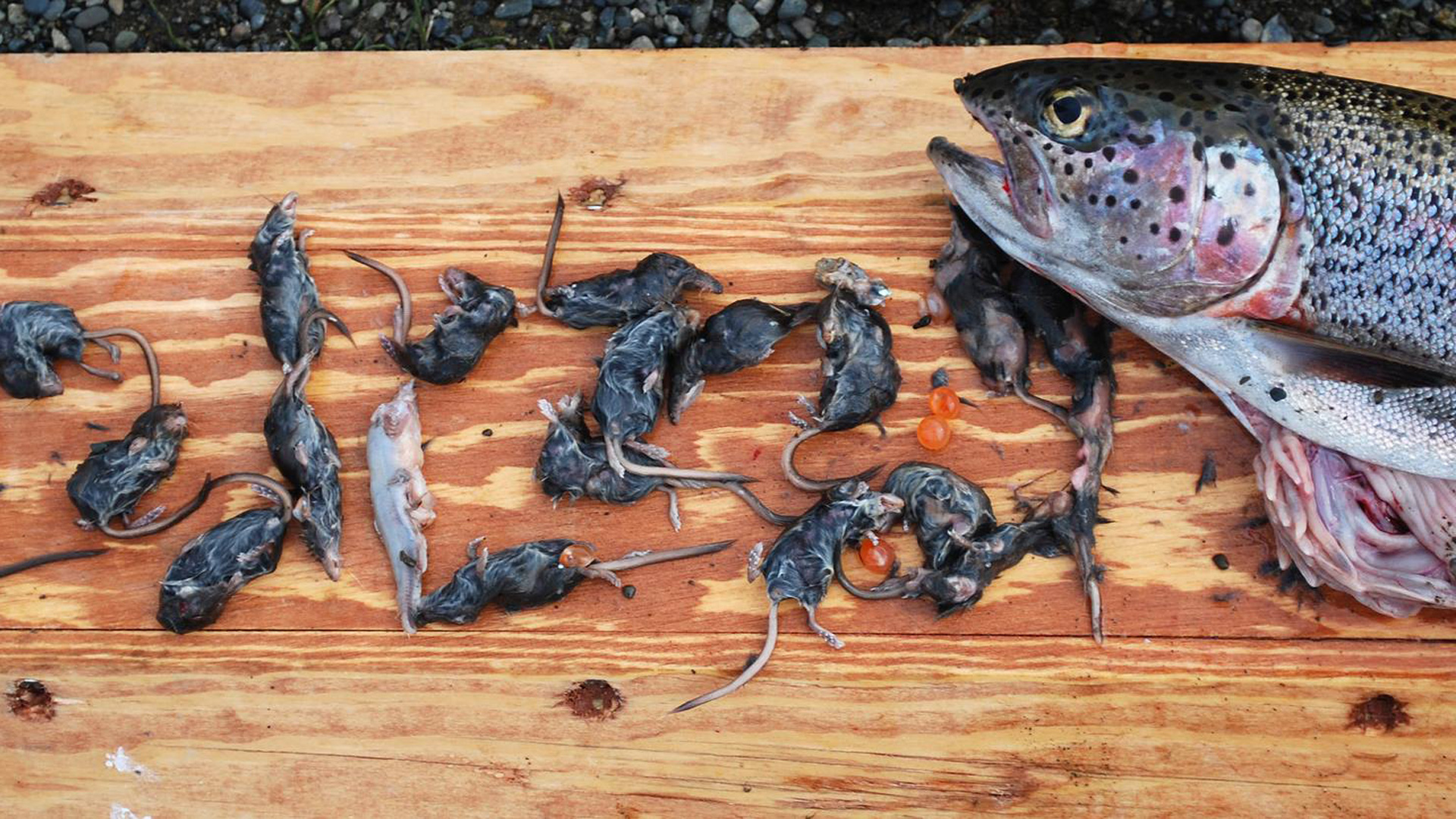
The shrew-eating trout of Togiak National Wildlife Refuge. Photo: U.S. Fish and Wildlife Service. Shrews may be fierce predators, but they’re small, which means they in turn become prey. Many mammalian predators, including red foxes, raccoons and cats, will attack them but rarely actually eat them. That’s because shrews emit an unpleasant musk that some liken to the smell of skunk.
This does not deter other predators, like owls and snakes. But my favorite incidence of shrew predation is a rainbow trout caught at Alaska’s Togiak National Wildlife Refuge that had 19 shrews in its stomach. These were not water shrews, but other species that fell into the water and became prey. You can read the full account in my previous blog.
-
Shakespeare and Shrews

Petruchio (Kevin Black) and Katherina (Emily Jordan) from the 2003 Carmel Shakespeare Festival production at the Forest Theater. Photo © Smatprt / Wikimedia Commons through a CC BY-SA 3.0 license And then there’s the literary work, Shakespeare’s Taming of the Shrew. During my Shakespearean literature class in college, my professor stated that the Bard did not refer to the literal shrew, as such a benign, inconsequential mammal wouldn’t fit the theme of the play.
As a lifelong mammal nerd, this amounted to heresy. I decided to make my final paper for the class a detailed comparison of the real shrew with the literary one. This, in retrospect, was a bit of a gamble. I relied on a store of shrew facts, many of which now appear in this blog.
As I read my professor’s comments on the paper, I could sense that she was initially annoyed at my topic, then became increasingly alarmed as she realized I was quite serious. The paper received an “A”, along with the pointed suggestion that I pursue a career in nature writing as opposed to academia.
And here I am, still sharing shrew facts.




awesome facts to know as a little shrew has made a burrow behind my shed next to a tree stump up here in ontario.
i was curious tho i have a chipmunk friend under the shed on the side but i have not seen him in like 2 weeks end of july beginning of aug and his hole hasnt been used
is it common for shrews to kill these chipmunks and eat them? because this shrew burrow appeared about 2 days ago (sept 8th 2020)
the chipmunk would be just a little bit bigger
I love this article. I’m researching relationships – as in families – within human and animal families to highlight the theme OUR WORLD, – A FAMILY OF FAMILIES.
Have you got anything to say about shrew family behaviour?
Thank you so much for such a great, informative article ! I hadn’t a clue that shrews will even eat mice (poor little mice !). I live in Northumberland, UK, and have recently built a tiny wildlife pond. I was just sitting quietly by it, when all of a sudden, two shrews shot out from underneath one of the rocks, it looked as if they were chasing each other. One fell into the pond, swam a couple of laps, then dived out and back under the rock ! This is about the third time I’ve encountered them and it looks as if they’ve burrowed all around the pond. I was wondering if this is usual ? They’re tiny and light beige in colour 🙂
Nice piece. Can you share your paper? You’re fun to read.
Hi, I’m from India. It’s a very good informative article about shrew. I was searching for the answer… Why shrew is weaker than mouse? It’s probably because their high metabolic rate. They can survive without food for few hours, whereas mouse can survive for days.
I have in 30 + years in S. Central Texas found 2 shrews that were no bigger than the 1st. joint on my thumb. Which is 1.25 to 1.5 inches. Do you recognize this as any identified species.
They were both dark grey and one of them I watched run across a mud puddle that was 4-5 feet wide. It was very fast and the only reason I managed to observe it was because it was on an oilfield pad. It was at night and I followed it with my light for approximately 100 feet. I didn’t attempt to pick it up because I didn’t want to injure it and had no container to capture it in.
I would love to have more info. on it but from everything I’ve read they are smaller than the ones described and their faces were more blunt and the tail was almost non-existent.
Shrew ID is tricky under the best of circumstances. Many species can only be reliably identified by examining their skulls and dentition. Unfortunately, I am not sure what species you are seeing in Texas. It does sound very tiny indeed! Perhaps a good mammal field guide like Peterson’s or the Kauffman guide can point you in the right direction.
We think that we saw a shrew going after starlings in our yard. Is that possible?
A starling would be very, very large prey for a shrew. It is possible it was scurrying around starlings but probably not chasing them. Could it be a weasel?
This was super interesting, thank you! I saw a Schrew for the first time yesterday, and became quite fascinated by it. I had no idea it was so viscous! I was filming it, and all the time it was sizing me up to eat me. Yikes!
Loved this whole article, and glad to see you’re still writing about the inconvenient lil mammal that started it all!
Interesting shrew info – who knew?
We live on the beach in the Pacific Northwest (Bandon, OR). Our home is on a small – easy walk down to the sand – bluff. The bluff is filled with whatever grows during various seasons and we daily watch hunting birds of prey swoop down to nab a tasty treat. We have an abundance of shrews, mice and other small fuzzy and non fuzzy critters.
Over the years we’ve had a couple of cats, several wonderful dogs, and a plethora of other animals of various kinds – but I digress….
Our cats have been nighttime hunters. They often bring in “special offerings” to us of live critters which they then chase thru the house, causing my husband or me (and sometimes both) to crawl around on the floor in the middle of the night to grab the terrified little ones and take them outside.
Last night a particularly large shrew (who understandably was stressed out) bit me as I tried to save his life (which I did). In any case, I put antiseptic cream & a band aid on the wound and this morning it’s a bit painful.
Long story short, glad to know shrew saliva is not toxic to humans.
Keep up the good work!
Great read! Thank you!! I have a Shrew that I’ve kept through the winter months and will soon release him. I was waiting for warmer weather to arrive and finally it is here! He’s very cute! ?
Thank you Matthew,! What an informative and interesting read! My cat has a dead shrew on the porch about every other day! Your info helped allay my fears that Jed was in danger. Enjoyed it- thanks for putting in the Teddy Roosevelt bit. Glad I found you. 🙂
Fascinating! I’ve always been a sort of amateur naturalist, since early childhood. I missed my calling. But I study the flora and fauna found all over the world with a hungry intensity at the advanced age of nearly 63 now. I met my first tiny shrew once while on a church get-away to an island in New York’s beautiful Adirondacks. It was on the bank of the crystal clear lake surrounding the island, hunting. It actually allowing me to pick it up and never bit me. It was just beautiful.
I just found a short tail shrew
With no ears in my pool, unfortunately
I was a little to late finding him, roughing him up did no good.
decided to look up an article for my kids to learn about it and came upon yours.
And found out they are venomous, I had no clue. Thank you for taking the time to write this article!
-lindsey
HOLY SHREW!!!!!!!!!